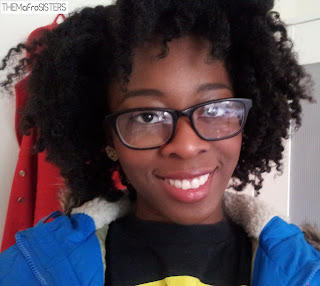So, in our early blog posts, Zainab and I described our hair in terms of numbers and letters. I said I had a mix of all the 4s (and a little 3) whilst Zainab said she was 4c. I’m sure a number of you thought '-_- what does that mean?’ Well, to answer your question, it’s our hair type! (Well this post is called hair typing, lol.)
Instead of just saying straight, wavy, curly or kinky or dividing hair according to race, hair stylists have come up with their own way of categorizing hair. At the moment the most popular way is using the Andre Walker system, which the team over at Naturally Curly have expanded to create a much more extensive system. The second way is using the LOIS system (additionally Mizani have their own system too).
Hair types are supposed to help you when choosing products and styles but personally I don’t find hair typing very useful, as every head of hair is different (I only use it to find YouTube gurus). What may work for someone else may cause your hair to split and break. On top of that, my hair pattern changes from the back of my head to the front of it, and has also changed over time (as I’ve learnt to properly moisturize it and also as it’s grown). So you may think your hair is one texture now, but in the future you might change your mind.
When hair typing, it’s important to know that any race can have any hair type. Just because you’re black it doesn’t mean your hair can’t be naturally straight/wavy, and just because you’re white it doesn’t mean you can’t have naturally coily/kinky hair - if you don’t believe me click here and here. (I used to think that because the front part of my hair was wavy it was heat damaged, so kept cutting it down thinking that it would grow coily like the rest of my hair – it never did and now the front of hair is shorter then the rest :P)
Andre Walker
Not everyone likes this system. Firstly some people don’t like it because straight hair is number 1 and afro hair is number 4, secondly Andre Walker has said some pretty controversial things about type 4 hair (he suggested Type 4 hair needed a relaxer to be managed - read it here). This typing system divides hair into 4 types:
- Type 1 is straight hair
- Type 2 is wavy
- Type 3 is curly
- Type 4 is kinky-coily
Then within hair types 2, 3 and 4 are classes a,b and c.
Type 2
 |
| L-R: 2A, B and C |
Type 2a-b hair is made predominately of loose s-shaped waves and usually lacks bounce. Because it is wavy and fine, it easily becomes greasy as sebum can travel down the shaft. Type 2c has a bit more of a curl on the top half of the head.
Type 3
 |
| L-R: 3A, B & C |
Type 3 hair ranges from predominately big loose curls (about the size of a finger) to small pencil-size curls. It frizzes up very easily when exposed to humidity (thanks to the British weather the front portion of my hair can never maintain a twist out :P) and ranges from being very fine to very coarse.
Type 4
 |
| L-R: 4A, B & C |
All hair types lose moisture to the surrounding environment over time; sebum from the scalp is supposed to combat this by traveling down the hair strand. However the kinks and tight coils in type 4 hair make it more difficult for the sebum to travel down the strand, and the sebum takes longer to get to the end of the strand. (Think of it like two cars traveling to the same place: one car travels down a straight road whereas another has to take constant twists and turns. The second car will take much longer to reach its destination). The longer type 4 hair is, the drier the ends of the hair (in comparison to another hair type). If not moisturized regularly, the dry ends break off resulting in what seems like little to no growth.
 |
| My hair texture (this is a week old twist out) |
4a hair is made from small coils, 4b hair kinky zig-zags and 4c hair very tight coils. 4c hair doesn’t clump together naturally like 4a and 4b hair as the individual strands twist and turn according to their own pattern, additionally the coils are so small it makes it hard for the strands to unite as one.
Next time I will tell you guys about the LOIS system!
Maz xx













